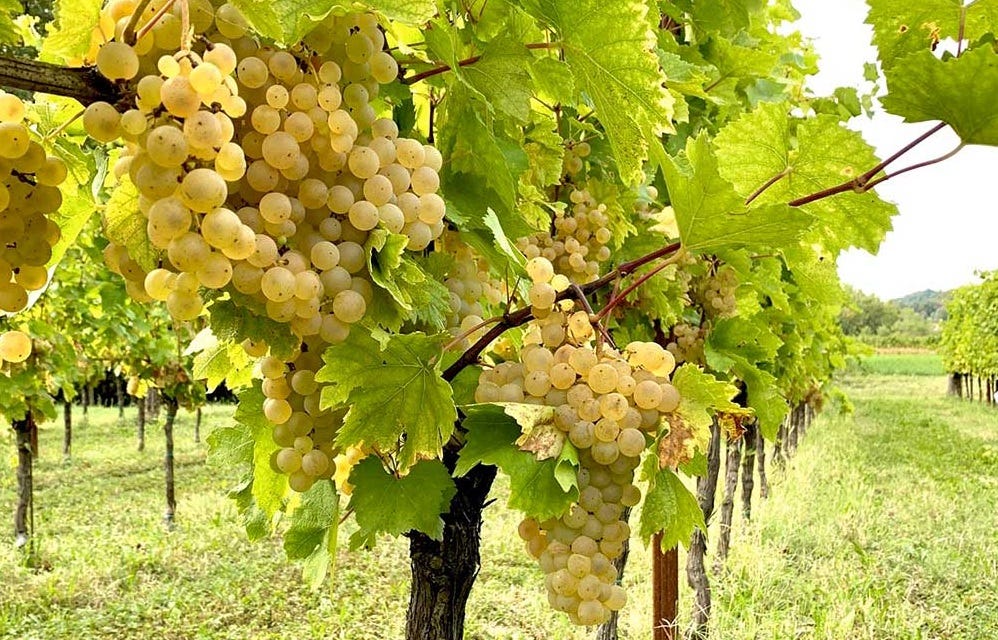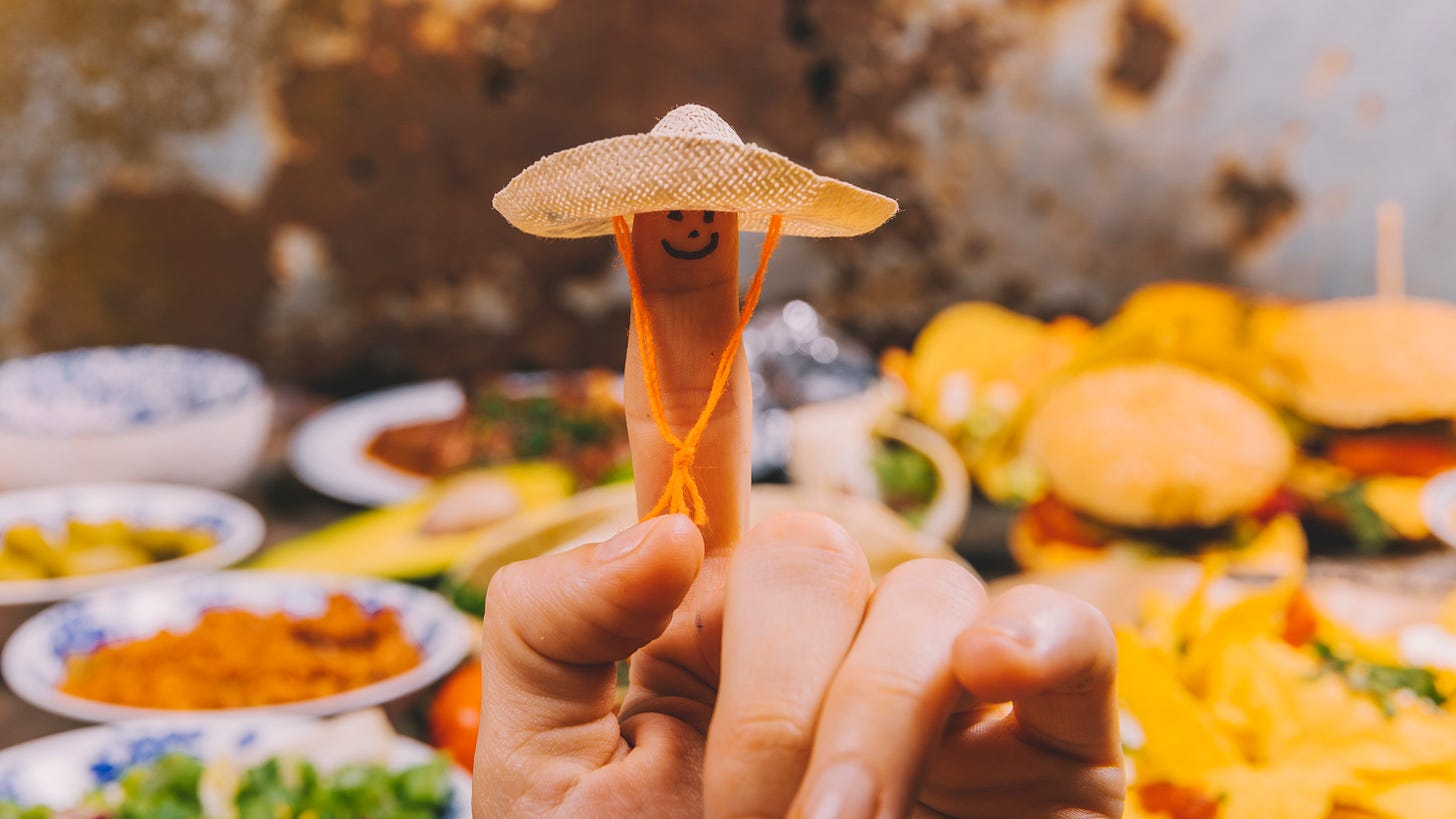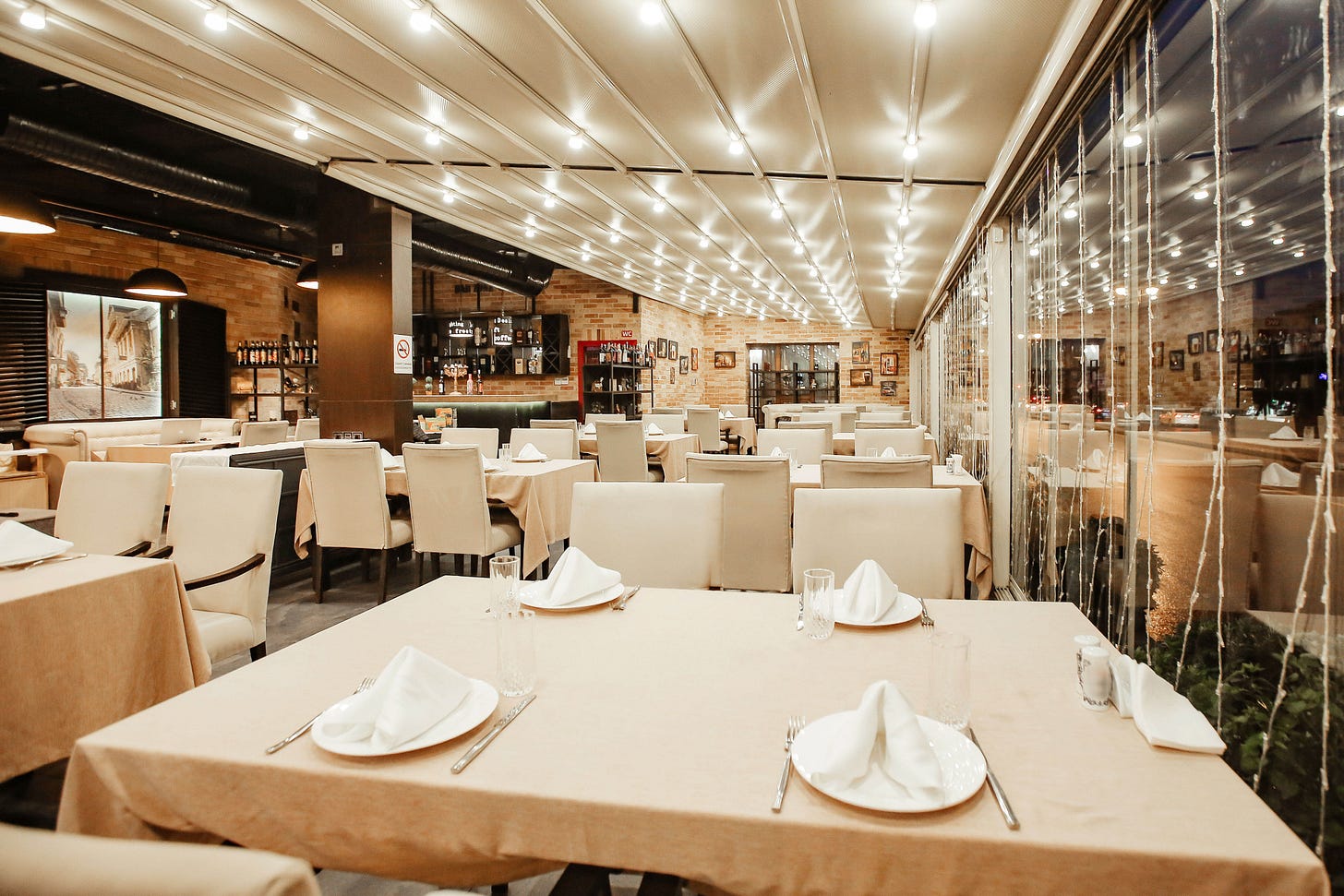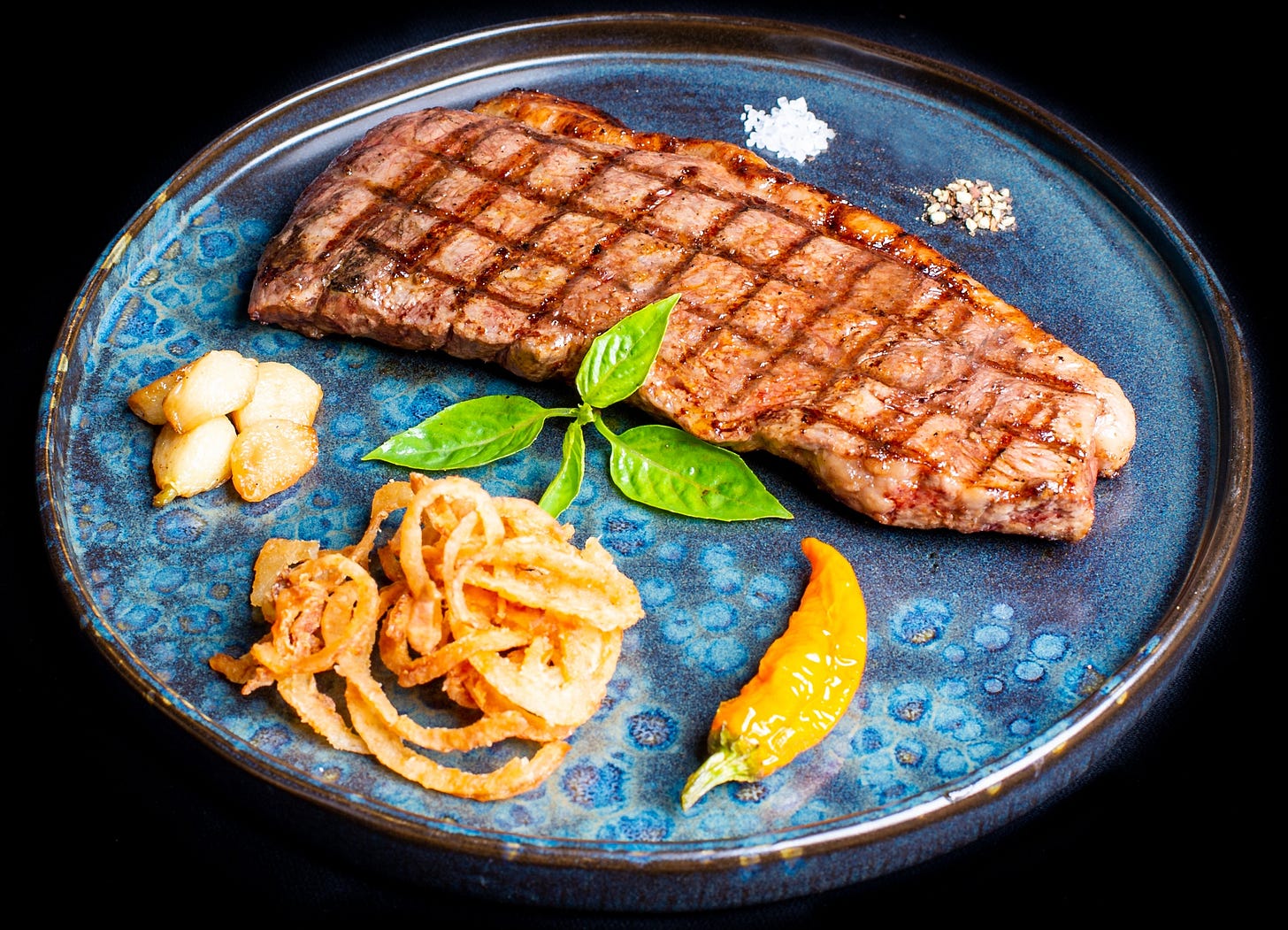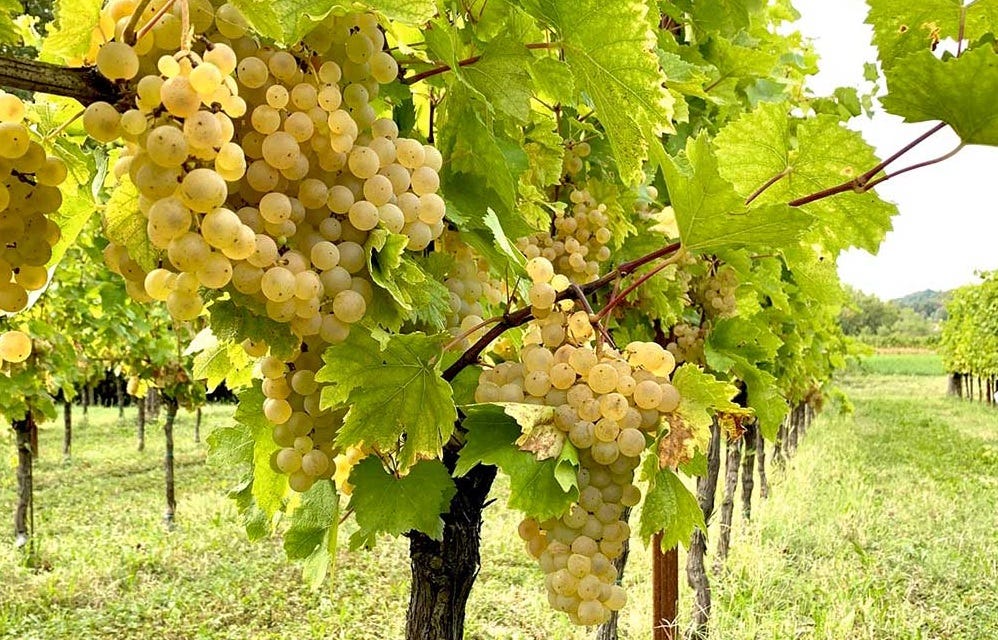
by lspeed | Oct 5, 2025 | DECODING GRAPES: FROM VINES TO VINTAGE
Ribolla Gialla is a white grape with roots in northeastern Italy. Historical records trace it back to the Middle Ages, when it was planted widely in the Collio hills near the Slovenian border. Across the frontier it is called Rebula, where it has long been grown in the Goriška Brda and Vipava Valley. While once considered a local wine for everyday use, it has become the poster child of modern Friulian whites and the revival of long-maceration styles that shaped today’s “Orange Wine” movement.
Geographical Reach
The variety’s core lies in Friuli Venezia Giulia—Collio, Colli Orientali, Isonzo, and Carso—where producers treat it as a regional signature. In Slovenia, especially Brda and Vipava, Rebula is equally important, forming a bridge across a shared wine culture. Smaller but growing plantings exist in Croatia’s Istria, Austria’s Styria, and more recently in experimental vineyards in California, Oregon, and New Zealand. Outside its European base, plantings remain rare, but the grape is attracting interest among winemakers looking for fresh, high-acid whites or suitable grapes for skin-contact winemaking.
Wines Styles
-
Dry Whites: Typically fermented in stainless steel or large neutral casks. Wines are pale, light on fruit, and emphasize acidity and texture.
-
Skin-Contact “Orange” Wines: Ribolla Gialla’s thick skins make it well suited for extended maceration. These wines range from golden to amber, with firm tannins. They are central to the Friulian and Slovenian tradition of orange wines.
-
Sparkling: The grape’s high acidity is ideal for metodo classico sparkling wines as well as lighter Charmat-method styles. These are increasingly seen in Friuli, sometimes marketed as a regional specialty.
-
Sweet and Late Harvest: Produced occasionally in warm vintages, usually in very small volumes.
Main Labels
Cellaring
Classic dry Ribolla is best enjoyed within a few years for freshness, while skin-contact versions can age for a decade or more. Sparkling Ribolla is a younger development, but several Friulian houses are positioning it as an identity wine for the region. Increasing international plantings suggest that Ribolla Gialla may continue to find a niche among winemakers searching for high-acid, versatile grapes adaptable to both traditional and experimental styles.
Image Credit: https://www.cadibon.it/wp-content/uploads/2021/06/vendemmia-Ribolla-Gialla-2021.jpg
_ _ _
© CHURRASCO PHUKET STEAKHOUSE / ALL RIGHTS RESERVED
Reprinting, reposting & sharing allowed, in exchange for a backlink and credits
Churrasco Phuket Steakhouse serves affordable Wagyu and Black Angus steaks and burgers. We are open daily from 12noon to 11pm at Jungceylon Shopping Center in Patong / Phuket.
We are family-friendly and offer free parking and Wi-Fi for guests. See our menus, reserve your table, find our location, and check all guest reviews here:
https://ChurrascoPhuket.com/
#Churrascophuket #jungceylon #phuketsteakhouse #affordablewagyu #wagyu
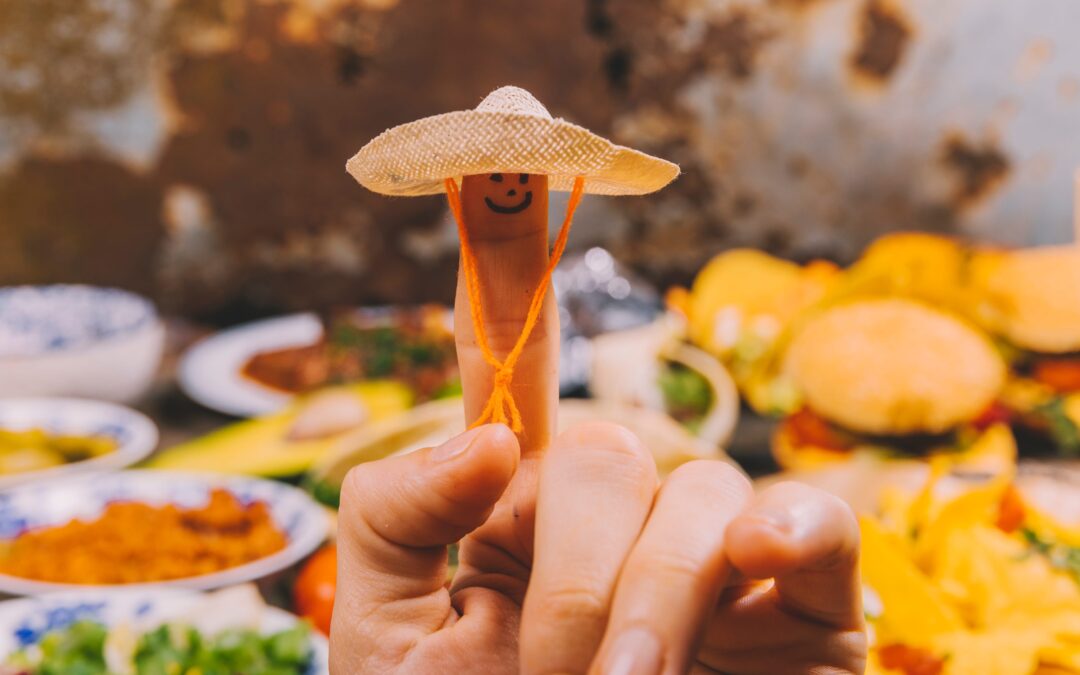
by lspeed | Oct 5, 2025 | RESTAURANT BUSINESS: BEHIND THE KITCHEN DOOR
During last year’s family holiday in Austria, I took my family to a nearby “South American Steakhouse”. It’s always helpful to see what “the other guys” are doing – and how. The decor looked authentic, menu and steak cut descriptions ticked the right boxes, and the Google reviews were solid.
The owner greeted us with a smile and a “Bienvenido”, seated us, and since I detected some sort of accent I asked him if he was South American. And this is where the experience fell apart. Instead of being upfront that he was Turkish (which he was), he started mumbling something about his mother being Spanish, but he himself having grown up in Austria. It was contrived and fake.
As restaurateurs, we of all people understand best that restaurant fads keep changing and evolving. We are always looking for niches yet unoccupied by competitors. The results can be magic if done right, or disastrous when they miss the mark.
What are the lessons here?
The End of Pretend
Modern diners travel widely, scroll endlessly, and know the difference between genuine craft and clever packaging. A restaurant that leans heavily on gimmicks or Instagram flash will get attention, but won’t build loyalty. Guests can spot staged stories and they walk away when they feel oversold to. Often, the difference is minor and unexpected, but one thing stands out. Restaurants that anchor themselves in authenticity – or at least honesty – build resilience and credibility.
Food With a Story
Authenticity begins in the kitchen. This isn’t about copying tradition for its own sake, it’s about clarity. An Izakaya should taste like Japan, not like a Pinterest mash-up. A steakhouse like our wins respect by buying the best meat they can, and then honouring it instead of dressing it in needless frills. Chefs who can explain why a dish matters, whether it’s a family recipe, a local farm partnership, or a heritage ingredient, serve more than food. They serve meaning and that is what diners remember.
Service Without the Script
It doesn’t end with the plate. A restaurant’s voice is also in the way staff smile, speak and move. Diners can tell the difference between a rehearsed greeting and a genuine welcome. The same goes for design: better to embrace a space’s own history and community than paste over it with trends. When a restaurant feels lived-in, when staff sound like themselves, when culture is celebrated rather than manufactured, that’s when the atmosphere sticks.
The Branding Trap
Too many restaurants curate a perfect online persona that falls apart in reality. Social media loves a façade, but guests won’t return for a façade. They’ll return for honesty. Branding should flow from the restaurant’s truth, not invent or fake it. A slightly imperfect but authentic experience is always more powerful than something polished yet hollow.
Authenticity Pays
Being real isn’t just good for reputation, it’s good business. Loyal guests come back without being lured by discounts. Staff stick around when they feel part of something genuine, not just another concept rollout. Word of mouth thrives on authenticity because it carries the weight of trust.
Trends come and go. New cuisines rise, presentation styles shift, and technology keeps changing how people discover and remember restaurants.
So get real – don’t just invent the next big thing. Be the thing.
Image Credit: https://freepik.com
_ _ _
© CHURRASCO PHUKET STEAKHOUSE / ALL RIGHTS RESERVED
Reprinting, reposting & sharing allowed, in exchange for a backlink and credits
Churrasco Phuket Steakhouse serves affordable Wagyu and Black Angus steaks and burgers. We are open daily from 12noon to 11pm at Jungceylon Shopping Center in Patong / Phuket.
We are family-friendly and offer free parking and Wi-Fi for guests. See our menus, reserve your table, find our location, and check all guest reviews here:
https://ChurrascoPhuket.com/
#Churrascophuket #jungceylon #phuketsteakhouse #affordablewagyu #wagyu
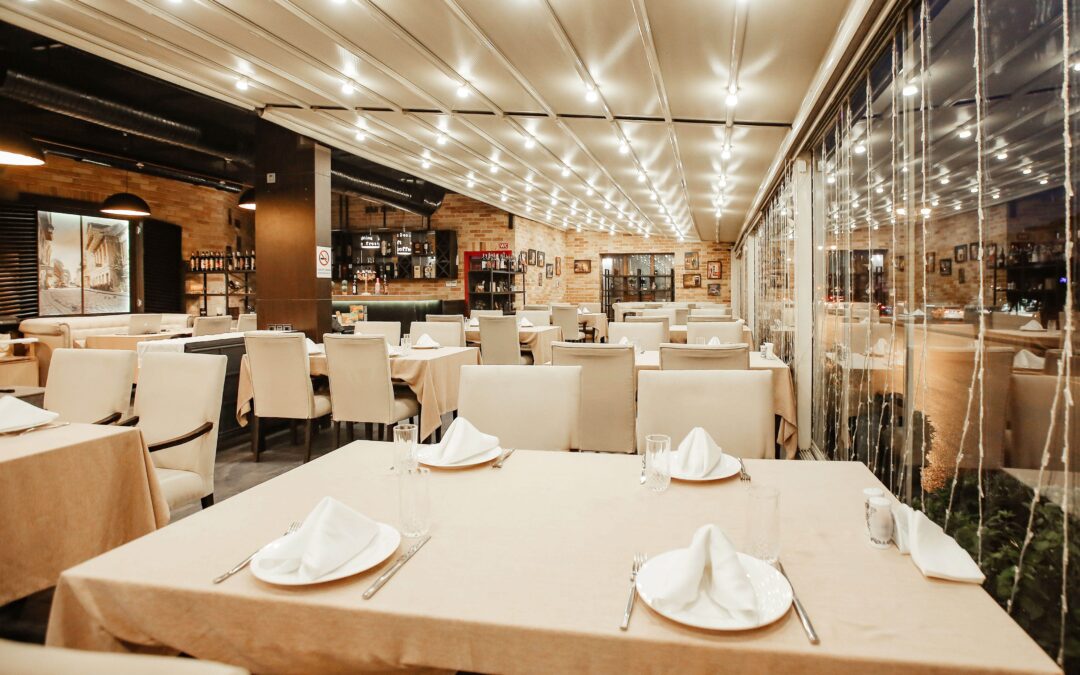
by lspeed | Sep 21, 2025 | BLACK BOX: RANTS, RAVES, REVIEWS & RECIPES
The paradox of restaurants is that excellence gives you a chance to succeed, but never a guarantee. What can separate the survivors from the fallen is not just flawless execution, but whether they managed to capture and hold onto that unexplainable spark that makes a restaurant feel like more than just another place to eat. Failure is explained away by poor execution, bad food, or weak service. But there’s a more painful reality that seasoned operators know well. Sometimes, restaurants fail even when they’ve seemingly done everything right.
Fragile Location
Even with the best menu and service, the wrong location can slowly bleed a restaurant dry. A prime street corner can suddenly become a dead zone if traffic patterns change, nearby construction drags on for years, or a major anchor tenant leaves a shopping complex. Unlike retail chains that can absorb losses across multiple outlets, a single independent restaurant is fully exposed to these shifts. Sometimes, a street or district simply “goes cold,” and no amount of culinary excellence can compensate.
Cost Spiral
Restaurants in high-cost locations operate on notoriously thin margins, often between 3–5 percent. Even when the dining room is full and online reviews glow, one unexpected increase can throw off the balance. A landlord raising rent by 20 percent, a sudden rise in minimum wages, or surging electricity prices can tip the equation into unsustainability. Operators who have perfected their operations are not immune to structural cost increases, they simply have less room to maneuver.
Shifts in Consumer Behavior
Dining trends evolve quickly, sometimes brutally. A restaurant may have captured the zeitgeist perfectly five years ago, only to discover that consumer interest has shifted elsewhere. Consider the decline of buffet dining, or the sudden surge in demand for delivery and takeout during and after the pandemic. A steakhouse, sushi bar, or fine dining room may have executed brilliantly within its category, but if diners migrate toward healthier eating, faster formats, or more casual experiences, excellence in the “old” model may not be enough to survive.
Market Saturation
Some restaurants fail not because they lack quality, but because they exist in a market that is simply oversaturated. In many urban centers, the number of new restaurants opening outpaces population or tourist growth. This creates a zero-sum game where even great restaurants fight for a slice of a static pie. A polished operation can still get lost in the noise if a dozen equally strong competitors open within a few blocks.
Macro Shocks
External events play a cruel role in restaurant survival. The pandemic taught the industry that no amount of good planning can withstand global disruption without deep reserves or structural adaptation. But beyond pandemics, restaurants are vulnerable to recessions, currency fluctuations, and tourism cycles. A restaurant may be thriving one year and collapsing the next, not because it changed, but because the surrounding economy shifted in ways it could not anticipate.
Good Isn’t Good Enough
Restaurants compete not only with one another but also with every alternative use of a customer’s money and time. A restaurant may be technically excellent but lack that emotional pull, such as a signature dish, a charismatic owner, or a sense of belonging. That turns occasional visitors into loyal regulars. Without repeat business, even the best operations cannot sustain themselves, unless they are in a high traffic or popular tourism location.
Investor Pressures
Behind many failed restaurants are partnership conflicts or investor expectations misaligned with reality. A restaurant can be popular, well-run, and still be deemed a failure if it does not deliver the financial returns investors demand. In many cases, partners disagree on strategy, expansion, or cost controls. The public may see a thriving dining room, but behind the scenes the business is unraveling because of decisions unrelated to food or service quality.
The “Magic Touch”
And then there is the intangible factor, the one no business plan can fully capture – the restaurant’s magic touch. It’s not on the menu, not in the décor, and not taught in hospitality schools. It’s the invisible ingredient that makes guests feel alive in a space, makes them linger just a little longer, and makes them return again and again.
At its core, this magic touch is rooted in authenticity, the sense that the place is true to itself, its story, and its people. Sometimes it comes from the charisma of the owner, sometimes from the energy of a team that radiates warmth, and sometimes simply from the “soul” of a place that feels genuine rather than manufactured.
A perfect restaurant can fall flat, while a small, imperfect operation can thrive against all odds, because it exudes honesty, warmth, and a sense of community. That ineffable ingredient often makes all the difference.
Image Credit: https://freepik.com
_ _ _
© CHURRASCO PHUKET STEAKHOUSE / ALL RIGHTS RESERVED
Reprinting, reposting & sharing allowed, in exchange for a backlink and credits
Churrasco Phuket Steakhouse serves affordable Wagyu and Black Angus steaks and burgers. We are open daily from 12noon to 11pm at Jungceylon Shopping Center in Patong / Phuket.
We are family-friendly and offer free parking and Wi-Fi for guests. See our menus, reserve your table, find our location, and check all guest reviews here:
https://ChurrascoPhuket.com/
#Churrascophuket #jungceylon #phuketsteakhouse #affordablewagyu #wagyu
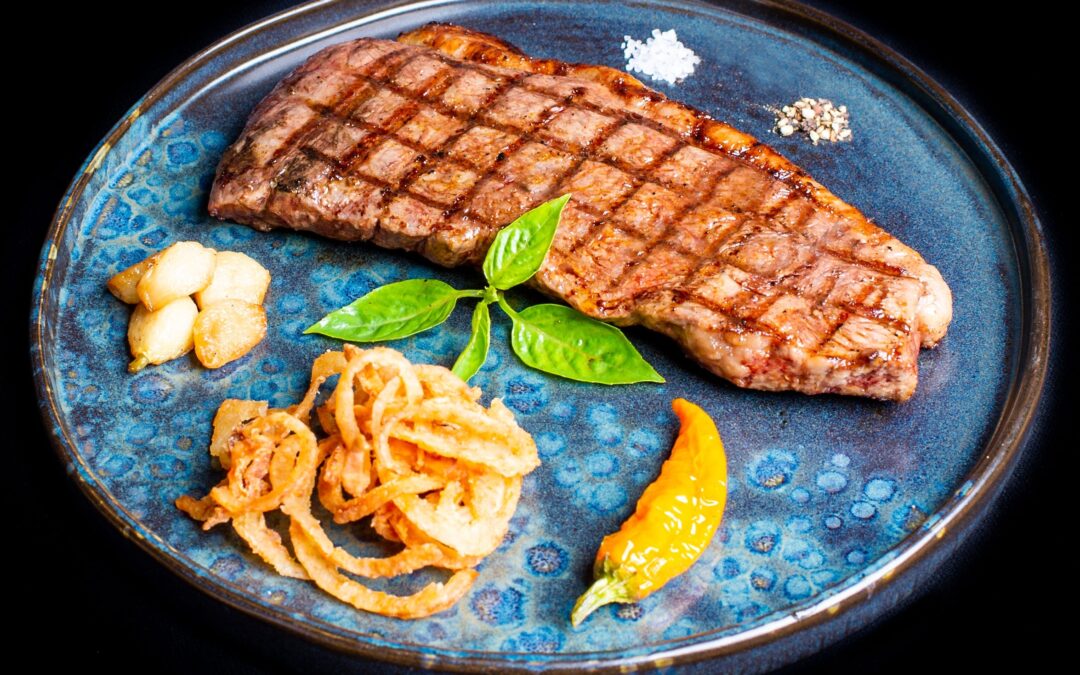
by lspeed | Sep 21, 2025 | KNOWLEDGE: MEAT ESSENTIALS
Ask five carnivores if they prefer their steaks on or off the bone, and you’ll get ten different answers and reasons. Each defended with the kind of passion normally reserved for politics or football. The argument seems simple on the surface. Proponents of bone-in steaks swear that the presence of bone somehow adds extra flavor, juiciness, and character to the meat. Others, equally convinced, argue that bone is a romantic distraction, one that makes little difference in taste but a big difference in what ends up on the bill.
The Flavor Argument
Bone-in supporters usually cite two main claims. First, they believe that the marrow inside the bone somehow seeps into the steak during cooking, enriching the flavor. Second, they insist the bone acts as an insulator, slowing down cooking and keeping meat juicier. These ideas sound appealing, but food science tells a different story. Bones are dense, and marrow does not migrate into the muscle during the relatively short cooking time of a steak.
What the bone does do is block heat, creating an uneven cooking surface. This can leave meat near the bone less done than the rest, a detail some diners appreciate, but others find frustrating. In blind tastings we conducted over the years, people always struggle to identify whether a steak was cooked bone-in or boneless. In other words, much of the “flavor difference” comes down to presentation, perception and tradition, not measurable results.
The Value Question
Where the debate becomes more practical, and more important to us as a restaurant, is in the “value for money” part. Ordering a Ribeye “on the bone” means paying a premium steak price for what is an inedible piece of bone. It might look dramatic on a plate, but the fact remains that you cannot eat it. The extra weight you are charged for is not steak, it’s suited for soup stock or frankly, a dog’s dinner.
Guests may feel they are indulging in a more “authentic” experience, but economically they are receiving less edible meat per gram, despite paying more. For us, this crosses a line. Our philosophy at Churrasco Phuket Steakhouse has always been to provide maximum quality and value. We want every Baht spent by our guests to go directly into what they can enjoy, not what ends up on the plate or – yes – in a “doggie bag”.
Why We Serve Only Boneless Cuts
You won’t find Tomahawks or other bone-heavy cuts on our menu. We prefer to serve clean, boneless portions – Ribeye, Tenderloin, Picanha, Oysterblade, Sirloin, etc. These cuts deliver pure eating pleasure without any waste. By eliminating the theatrics of large bones, we focus instead on what truly matters: the sourcing of prime beef, expert aging, precise grilling, and consistent doneness.
These are the factors that shape guest enjoyment far more than whether a bone happens to be attached. Our guests come to us knowing that when they order 300 grams of Wagyu Ribeye, they get 300 grams of Wagyu Ribeye that will not cost them an arm and a leg. That transparency is central to our identity and success as Phuket’s most affordable quality steakhouse, and has served us well over the 13 years we have been in operation.
Image Credit: https://churrascophuket.com
_ _ _
© CHURRASCO PHUKET STEAKHOUSE / ALL RIGHTS RESERVED
Reprinting, reposting & sharing allowed, in exchange for a backlink and credits
Churrasco Phuket Steakhouse serves affordable Wagyu and Black Angus steaks and burgers. We are open daily from 12noon to 11pm at Jungceylon Shopping Center in Patong / Phuket.
We are family-friendly and offer free parking and Wi-Fi for guests. See our menus, reserve your table, find our location, and check all guest reviews here:
https://ChurrascoPhuket.com/
#Churrascophuket #jungceylon #phuketsteakhouse #affordablewagyu #wagyu

by lspeed | Sep 21, 2025 | WINES: UNCORKING THE MYSTERY
New York is the clear underdog in American wine, overshadowed by the volume and global marketing power of California, and to some extent by the boutique cool of Oregon and Washington. Yet, New York is home to some of the oldest vineyards in the country and continues to a number of produce wines that can hold their own alongside bottles from Europe and the New World. That said, the path to international recognition has been uneven and is ongoing.
Hybrid Roots
New York’s winemaking history stretches back to the 1600s, with commercial wine production emerging in earnest in the 19th century. However, much of the early wine output relied on native American grape varieties like Concord and Catawba. High in acidity and unusual in character, they are used mostly for sweet wines, sacramental purposes, and table grapes. These were hardy, disease-resistant grapes but not well-suited to the production of dry, refined wines expected by global wine markets.
The shift toward European Vitis vinifera varieties like Riesling and Chardonnay came relatively late and was pioneered in the 1950s by Dr. Konstantin Frank in the Finger Lakes. His success in cultivating vinifera in cold climates helped reposition New York’s winemaking identity. Still, hybrid grapes remain common today, particularly in lower-priced and regional wines, which continue to account for a substantial portion of overall production.
Key Regions
New York’s wine landscape is dominated by five main AVAs (American Viticultural Areas), each with its own conditions and identity:
-
Finger Lakes: The best-known region, especially for Riesling. The deep glacial lakes create favorable microclimates that help mitigate frost and extend ripening.
-
Long Island: Produces Merlot, Cabernet Franc, and Chardonnay in a maritime climate reminiscent of Bordeaux, though often with lower alcohol and higher acidity.
-
Hudson River Region: One of the oldest growing areas, still working to distinguish itself beyond local markets.
-
Lake Erie & Niagara Escarpment: Focus on hybrids and Concord grapes, with a growing interest in quality-focused vinifera and ice wines.
Among vinifera grapes, Riesling stands out. It often yields crisp, mineral-driven wines with aging potential, drawing comparisons to cooler-climate German Rieslings. Cabernet Franc and Merlot from Long Island have also shown promise, though consistency is a challenge due to vintage variation and limited economies of scale.
Wine Styles
The styles produced across New York vary widely, from dry whites and reds to dessert wines and traditional method sparkling wines. At the premium end, small producers are making site-specific, low-intervention wines with clear ambition and increasing finesse. However, much of the state’s output still caters to local or entry-level markets, with wines that are sweeter, simpler, and priced accordingly. This split between artisanal ambition and mass-market practicality reflects the region’s main challenges.
Room to Grow
How do New York wines compare internationally? At the high end, some Rieslings from producers like Hermann J. Wiemer, Ravines, and Forge Cellars have earned critical praise and scored well in blind tastings against German and Alsatian peers. These successes are real but relatively isolated. In red wine, Long Island’s Bordeaux-style blends are often elegant and restrained but face stiff competition from Old World and New World wines at similar price points that offer greater depth or brand recognition.
There is also the issue of scale. Many New York wineries are small, limiting their distribution and price competitiveness abroad. For wine buyers outside the U.S., the state’s name still lacks the cachet of Burgundy, Napa, or even Marlborough. This affects not just retail but placement on export-focused restaurant wine lists.
Recognition & Realism
New York wines have received increasing attention at competitions like the International Wine Challenge and Decanter World Wine Awards, particularly in white and sparkling categories. Still, international market penetration remains limited. For now, New York’s wines are better known and appreciated by sommeliers, wine critics, and curious local drinkers rather than by the broader wine-buying public.
Whether that will change depends less on quality, and more on branding, market access, and consistent storytelling. For all its achievements, New York wine still needs clearer positioning: not just as “not California” or “Riesling from the East,” but as a region with its own voice.
More Information: https://newyorkwines.org/
Image Credit: https://newyorkwines.org/wp-content/uploads/2020/04/2019-FLX-Vineyard-Visit-Photo-Credit-to-Rima-Brindamour-102-scaled.jpg
_ _ _
© CHURRASCO PHUKET STEAKHOUSE / ALL RIGHTS RESERVED
Reprinting, reposting & sharing allowed, in exchange for a backlink and credits
Churrasco Phuket Steakhouse serves affordable Wagyu and Black Angus steaks and burgers. We are open daily from 12noon to 11pm at Jungceylon Shopping Center in Patong / Phuket.
We are family-friendly and offer free parking and Wi-Fi for guests. See our menus, reserve your table, find our location, and check all guest reviews here:
https://ChurrascoPhuket.com/
#Churrascophuket #jungceylon #phuketsteakhouse #affordablewagyu #wagyu


